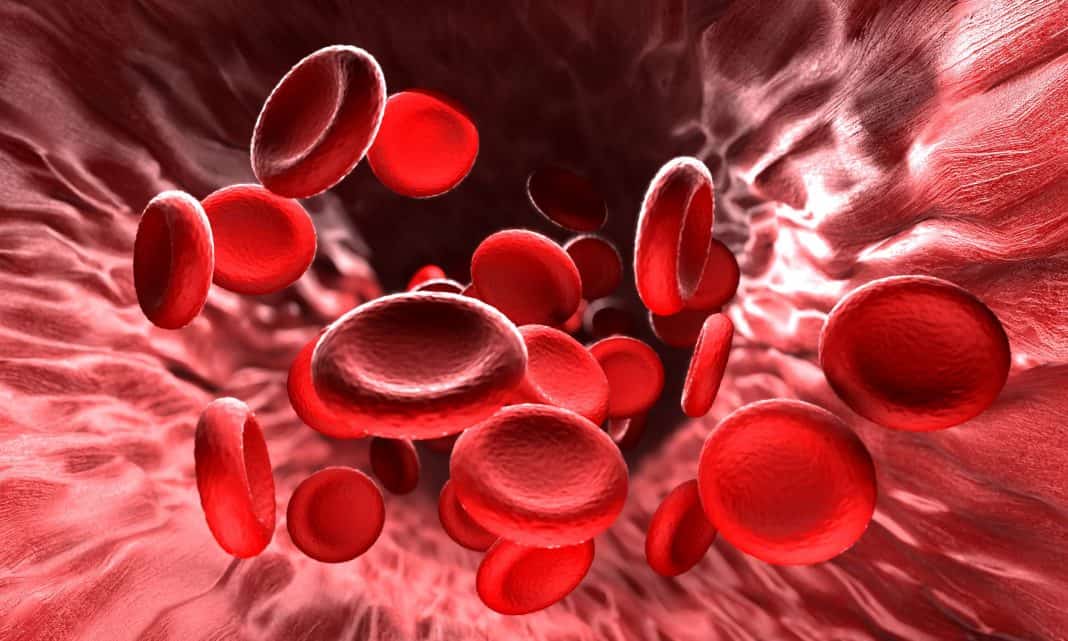Immune thrombocytopenia (ITP, also known as idiopathic thrombocytopenia purpura) is an autoimmune disease in which the immune system attacks cells in the body, specifically the platelets in the blood, which in turn causes low platelet counts.¹
According to ITP Australia, a patient with a severe diagnosis of ITP will have a platelet count of zero, and those with a mild diagnosis, up to 100, whereas a healthy platelet count ranges from 150 to 450 (or 150,000 to 450,000 platelets per microlitre of blood).¹
Symptoms of ITP
The amount and severity of symptoms will differ in each patient, as some people will experience only a few symptoms, and others many.
The most common symptoms, according to ITP Australia, include spontaneous bleeding, bruising, petechiae (a skin rash that consists of small red dots, prominently on the lower legs, but that can be found anywhere on the skin), bleeding gums and/or blood blisters in the mouth, heavy or abnormal menstruation, nose bleeds, internal bleeding, fatigue, and low mood (depression).¹
Platelets
Platelets are formed in bone marrow along with red and white blood cells. When the cells are released into the blood, they circulate within the blood, and bind together when they receive a signal indicating there are damaged blood vessels. ITP Australia uses this example: When a patient gets a cut, the platelets will bind to the injured site, resulting in the first stages of a clot, then the bleeding stops.¹
Types of ITP
According to ITP Australia, there are three stages of ITP patients:
Newly diagnosed ITP (within three months of initial diagnosis). For children, this commonly follows a viral infection, and in most cases, a full recovery is expected. However, within adults, there’s often no clear event leading to the diagnosis.
Persistent ITP (three to 12 months from initial diagnosis). This includes cases where the platelet count has fallen after initial treatment has been tapered and those where the platelet count has not recovered to above 100.
Chronic ITP (more than 12 months from initial diagnosis). More commonly found in adults, this refers to cases with severe ITP (platelet count below 30, or with bleeding).
Diagnosis
ITP Australia advises that no single test is currently available to determine that a person has ITP, as there are many causes for a low platelet count. An intensive review of a patient’s history is the key focus when determining whether someone is diagnosed with ITP, particularly considering any past infections and prescribed and non-prescribed medications. Patients go through a variety of tests to determine the diagnosis of ITP. These may include:
- Full blood count. This will also include a platelet count, and can potentially identify other issues.
- Kidney and liver function. If this is raised as a concern, it can suggest an alternative cause for low platelets.
- Viral and autoimmune screening. An antinuclear antibody (ANA) test is positive when a patient has symptoms that suggest a broader autoimmune disorder.
- HIV and hepatitis. These tests for a type of ITP are much more common in people with these viruses, and treatment will be different.
- Bone marrow biopsy. Due to platelets being formed in bone marrow, a doctor may perform a biopsy to check the health of the bone marrow. This is not always required but is commonly needed in patients aged 60 or over.
Treatments
Initial treatment generally includes corticosteroids and/or intravenous immune globulin (IVIg), followed by secondary treatments if needed.
Secondary treatments can include rituximab, TPO-RAs, and/or splenectomy.
If a patient or customer is presenting with symptoms of ITP, it’s best to recommend they speak with a pharmacist and their GP, who can begin the process of diagnosis.¹
The Platelet Disorder Support Association (PDSA) suggests certain supplements can help reduce the symptoms of ITP.
These include:
- Vitamin B9 (folic acid).
- Vitamin C.
- Vitamin D.
- Vitamin K.2
However, it’s important to note some of the risks, says the PDSA. Much like biological activity, pharmaceuticals can react differently to each individual. Some supplements are shown to activate the immune system, and because patients with autoimmune diseases such as ITP have an overactive immune system, these supplements can possibly worsen the disease.2
As a pharmacy assistant, while it’s your first priority to suggest the customer speaks with a GP or specialist, it’s also important to remind customers of the risks that investing in such supplements can pose.
References
- ITP Australia, 2023. ‘About ITP’. itpaustralia.org.au/about-itp/
- PDSA, 2013. ‘Vitamins and other supplements’. pdsa.org/treatments/complementary/vitamins-and-supplements.html
This feature was originally published in the March issue of Retail Pharmacy Assistants e-magazine.






